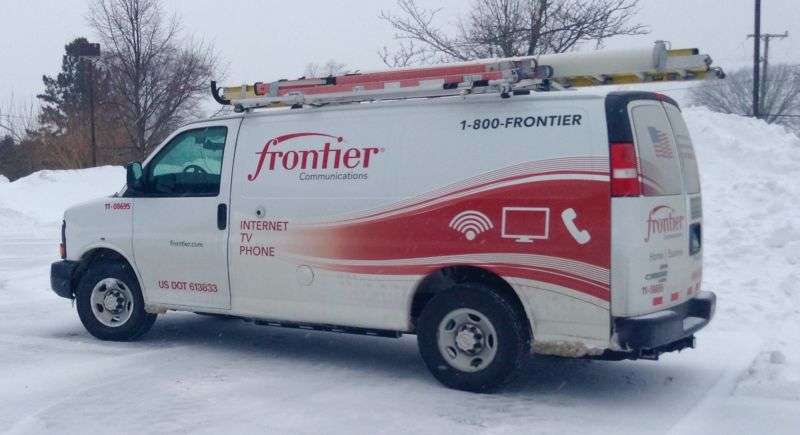
ISP Frontier is failing so badly it won’t take questions from investors

Frontier Communications yesterday reported lower revenue and a $5.45 billion goodwill impairment charge, and it warned investors that its revenue will continue to decline in future quarters.
Frontier’s financial performance is so bad that the company said it wouldn’t take any questions from investors during its quarterly earnings call yesterday. Frontier reported second-quarter revenue of $2.07 billion, down from $2.16 billion in Q2 2018 and $2.1 billion in Q1 2019. Frontier also reported a net loss of $5.32 billion, though this was due to the goodwill impairment charge.
Goodwill is the fair market value of a company, excluding its assets. Frontier said its goodwill impairment of $5.45 billion is due to “our expectation of continued revenue declines because of pressures on the business, reduced expectations for the transformation program, the long-term sustainability of our capital structure, a lower outlook for our overall industry, and the cumulative impact of all these factors on business trends going forward.” Frontier said its goodwill balance is now just $276 million, “and further impairments are possible as a result of ongoing reviews of the business and operations.”
Frontier also recorded a loss of $384 million related to the “disposal” of Northwest Operations, a four-state division that it is planning to sell to WaveDivision Capital. The sale isn’t final yet.
Frontier previously reported a net loss of $87 million in Q1 2019 and $18 million in Q2 2018. Frontier’s capital expenditures—which include broadband expansions and improvements—totaled $275 million in the second quarter, down from $305 million a year ago.
Customer losses, even in fiber
Frontier has 3.63 million broadband subscribers in 29 states, down from 3.86 million a year ago. Frontier’s total of 738,000 video customers is down from 902,000 in Q2 2018. Frontier’s employee count has also dropped from 21,718 to 19,872 in the past year.
Even Frontier’s fiber-to-the-home service isn’t stopping those broadband losses. “Consumer fiber broadband net losses were 10,000 and consumer copper broadband net losses were 46,000, in each case reflecting seasonality and increased churn,” Frontier said.
The DSL losses are no surprise, as customers can get much faster and more reliable service from cable—unless they’re unlucky enough to live in a place where Frontier DSL is the best service. Frontier DSL has plenty of problems beyond the fact that it’s outdated: an investigation by the Minnesota Commerce Department this year found that Frontier has failed to properly maintain its telecom network and failed to give refunds or bill credits to customers affected by outages that have sometimes lasted for months.
You’d think Frontier’s fiber service would be able to lure customers away from cable, but Frontier has a poor customer-service track record, even with the FiOS fiber network that it purchased from Verizon.
Frontier said it’s still planning fiber-to-the-home upgrades to 10Gbps and that it’s expanding rural broadband with state and federal grants. But the company’s customer losses in both copper and fiber and the warning to investors about future revenue declines suggest that Frontier won’t be stopping Comcast and Charter from expanding their domination of the US broadband market.
Windstream, another fiber and DSL provider, filed for bankruptcy in February.




